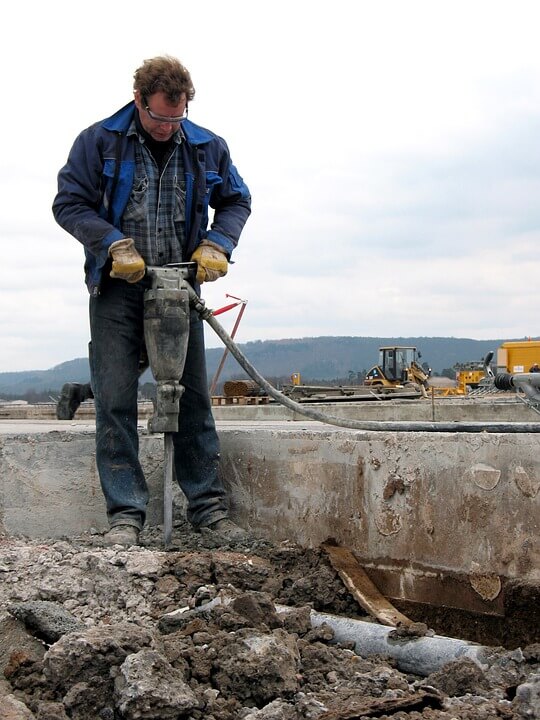After 45 years without a change, the Occupational Safety and Health Administration (OSHA) recently issued a standard lowering the acceptable exposure levels for crystalline silica and construction and placing new burdens on the construction industry. Compliance with the new silica standard is multi-faceted and necessary to help businesses meet OSHA's requirements as well as respond to any allegations of failure to comply.
What You Need to Know about Crystalline Silica and Construction
On June 23, 2017, the requirement of compliance with the new Respirable Crystalline Silica regulation (29 CFR 1926.1153) took full effect. The practical enforcement date, however, was October 23, 2017, because OSHA delayed enforcement until September of that year and then provided an additional 30-day grace-period for employers making a good faith effort to comply. The regulation established separate standards for general and maritime industries, which commenced on June 23, 2018.
West Virginia has its own West Virginia Occupational Safety and Health Act but has adopted and enforces the federal OSHA standards.
Ever-Present Crystalline Silica and Construction Worksite Requirements
Crystalline silica is a natural compound found in soil, sand, granite, and many building materials. On a daily basis, millions of construction workers are exposed to silica particles or dust.
What construction products contain silica? There are many, but some common materials are asphalt, brick, cement, concrete, drywall, grout, mortar, stone, and tile. Given the prevalence of these products, respirable crystalline silica and construction activities go hand in hand at worksites in a variety of areas:
- Jack hammering;
- Sandblasting;
- Cutting, drilling, sawing, or grinding of stone, brick and concrete;
- Grinding mortar;
- Well drilling;
- Fracking; and
- Tunneling
Over prolonged periods of time, exposure to silica dust can cause serious illnesses including silicosis and kidney disease. OSHA oversees silica exposure control in the construction industry to maintain worker safety and health.
The Updated Crystalline Silica and Construction Standard
The new standard applies to cumulative construction site exposure that exceeds 25 micrograms per cubic meter of air (25 µg/m3) as an 8-hour time-weighted average (TWA). The new standard lowers both the permissible exposure limit (PEL) to 50 µg/m3 as an 8-hour TWA and the action level (AL) to 25 µg/m3 as an 8-hour TWA.
To keep workers safe, employers may use either a control method identified in the 29 CFR 1926.1153 at Table1 or monitor and measure employee exposure to silica dust and then decide what remedial measures best suit their work environments. Employers who follow the protective measures set forth in Table 1 are not required to conduct exposure assessments or adhere to the PEL. For all tasks not listed in Table 1, employers must meet the PEL. Similarly, the PEL, AL, and other regulatory requirements must be followed where an employer does not adequately implement the Table 1 protective measures.
In addition to ensuring worker health and safety, the regulations impose other obligations on the construction industry:
- Establish a written exposure control plan (ECP);
- Designate a competent person to oversee the ECP;
- Adhere to regulatory housekeeping practices to avoid silica contact;
- Provide for employee medical evaluations;
- Communicate to and train affected employees on the hazards of silica and safety measures; and
- Maintain records on the air monitoring, objective, and medical surveillance data collected pursuant to the regulation.
Non-Compliance May Result in Fines and More
Compliance with OSHA's silica standard is mandatory. Failure to follow the regulation subjects construction industry employers to OSHA silica standard fines for serious violations. These fines can add up quickly: The penalty for a serious violation is $12,934 per violation; the fine for failure to abate is $12,934 per day; and willful or repeated violations cost employers $129,336 per violation.
The agency has the discretion to cite employers for violations of each section of the new regulation, or it may group breaches into a single penalty. If OSHA labels an employer as a willful or egregious actor, it may impose penalties for each affected worker.
Workers afflicted with silica-related illnesses may bring their own claims for damages in court under the West Virginia Asbestos and Silica Claims Priorities Act.
Satisfying the requirements of the new OSHA silica standard is complex. It involves numerous considerations and decisions that are unique to each job site. Jenkins Fenstermaker's attorneys have the legal knowledge to decipher OSHA regulations and apply them to your particular worksite as well as respond to any OSHA inquiries or charges. To review your unique situation with one of our attorneys who is conversant with the crystalline silica and construction standard, complete this convenient online form or call (304) 523-2100.


